Maintaining optimal indoor air quality is essential for promoting healthier living environments, especially for homeowners in Washington County. As indoor air can often harbor more pollutants than outdoor air, understanding how to manage and improve air quality can significantly impact your family’s health and comfort.
Stay tuned as we at Burkhardt Heating & Cooling provide a detailed checklist that Washington County homeowners can use to assess and enhance their indoor air quality. From routine HVAC maintenance to adopting habits that reduce contaminants, each step is designed to help you create and sustain a healthy living space. Through practical advice and expert insights, we aim to empower homeowners with the knowledge and tools necessary to tackle common air quality issues effectively.
Regular HVAC Maintenance
Ensuring that your heating, ventilation, and air conditioning (HVAC) system functions efficiently is foundational to maintaining excellent indoor air quality. A well-maintained HVAC regulates the temperature and filters out potential air pollutants before they enter your living space. Regular checks and timely HVAC system maintenance can significantly reduce dust, pollen, and other allergens accumulation.
Start by replacing or cleaning the air filters every three months or more frequently if you have pets or live in areas with high pollen counts. Additionally, schedule an annual inspection with our professional to ensure that the HVAC system is clean and optimally functional. This routine check can help identify issues like mold growth in ducts or malfunctioning components that could impair air quality.
Reducing Indoor Pollutants
Reducing pollutant sources is critical in maintaining cleaner indoor air. Be cautious about the materials and products you bring into your home. For instance, opt for low-VOC (volatile organic compounds) paints and cleaning products, which emit fewer airborne chemicals compared to conventional products. Additionally, be mindful of furniture and building materials, as some may release formaldehyde, a common indoor pollutant.
Smoking inside the house can drastically deteriorate indoor air quality due to the release of numerous pollutants. Establishing a no-smoking policy indoors is a significant step towards ensuring a healthier air environment. Similarly, regular grooming and bathing pets can reduce pet dander and fur, common allergens.
Enhancing Ventilation
Improving ventilation is another effective way to boost indoor air quality. Adequate ventilation reduces moisture levels, helping prevent the growth of mold and mildew and decreasing the overall indoor pollutant concentration. Simple practices like opening windows whenever weather permits can bring fresh outdoor air into your home, flushing out stale and polluted indoor air.
For more controlled ventilation, consider installing exhaust fans in high-moisture areas such as kitchens and bathrooms. An energy recovery ventilator (ERV) could also be an excellent investment for your home. This device helps maintain a balanced indoor environment by exchanging indoor air with fresh outdoor air while also preserving energy from the exchanged heat.
Monitoring Humidity Levels
Maintaining the right humidity level in your home is crucial for both health and comfort. High humidity can encourage the proliferation of dust mites and mold, while air that is too dry can exacerbate respiratory problems and skin irritation.
Use a hygrometer to monitor your home’s humidity levels actively. Utilize dehumidifiers to manage excess moisture, especially in areas like basements where dampness is more prevalent. Conversely, during drier months or in naturally arid climates, consider using a humidifier to maintain sufficient moisture in the air, which can help prevent dry skin and respiratory issues.
Proper Use of Household Appliances
When used correctly, household appliances can also contribute significantly to maintaining good indoor air quality. Ensure that gas stoves are well-ventilated to the outside to minimize the accumulation of harmful combustion by-products such as carbon monoxide and nitrogen dioxide. Regularly cleaning and maintaining these appliances can further prevent the emission of harmful pollutants.
Vacuum cleaners equipped with HEPA filters are highly effective at trapping dust and allergens from floors and upholstered furniture. Make vacuuming a regular part of your cleaning routine, focusing especially on high-traffic areas and where allergens are likely to accumulate.
Choosing Houseplants Wisely
Incorporating houseplants is a natural and aesthetic way to purify indoor air. Plants like spider plants, peace lilies, and Boston ferns are known for their ability to absorb toxins such as formaldehyde, benzene, and carbon monoxide. However, it’s crucial to manage plants properly to avoid unintended consequences. Overwatering, for example, can increase humidity levels and promote mold growth. Ensure plants are healthy and pots are clean and free from standing water.
By adopting these strategies, homeowners can significantly enhance the quality of indoor air, creating a safer and more comfortable environment for everyone in the household. Each step taken towards improving indoor air quality can contribute to overall health and well-being, making the effort well worth it for a happier, healthier home.
Breathe Easier with Expert Indoor Air Quality Solutions
Ensuring the air inside your home is clean and healthy contributes significantly to your family’s well-being. By following the comprehensive checklist we’ve outlined, homeowners can effectively tackle indoor air pollution, enhancing both comfort and health. While individual efforts go a long way, pairing these with professional assessments and solutions can elevate your indoor environment to the highest standards.
If you’re looking for expert guidance or need professional HVAC services to boost your home’s indoor air quality in Washington County, Burkhardt Heating & Cooling is here to help. Our team of skilled technicians specializes in optimizing HVAC systems and providing solutions tailored to your specific needs. Contact us today to schedule an assessment and take a significant step towards a healthier, fresher home. Let’s work together to ensure the air you breathe indoors is as clean and safe as possible.











